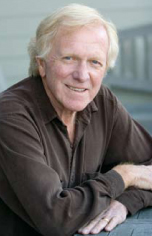If you’re confused by headlines about St. Vincent’s/Silveira, Countywide Plan and Baylands Corridor, this column is for you.
Nearly 35 years ago, to limit development, county supervisors divided Marin into three land-use corridors: one for recreation and open space (Point Reyes National Seashore/Golden Gate National Recreation Area); a second for agricultural and rural lands (West Marin/Mount Tamalpais State Park); and a third, the smallest, the City Centered Corridor, where most of Marin’s people would live and work.
As a result, 80 percent of Marin’s 520 square miles is preserved—now and forevermore—as open space. No other U.S. county so close to a major metropolitan area compares when it comes to open space acreage per capita.
That first Countywide Plan was approved in 1973, then revised slightly in 1983 and 1994. Now a third revision is under consideration and a final decision will be made this fall.
To date, controversy has centered on a proposal by environmental groups wanting to add a fourth corridor to the county’s original three. “It’s a ‘, Baylands Corridor,’” says Perry Newman, president of Marin’s League of Women Voters, who opposes the idea.
“And in its present form it would severely restrict, if not eliminate, development on the St. Vincent’s/Silveira property, which is well within the City Centered Corridor.”
Newman maintains that concerns about preserving Marin’s bayfront lands were met with the 1994 Countywide Plan revisions that are still in force. “St. Vincent’s/Silveira is entitled to be developed,” she says, adding that, “the property is ideal for needed senior and affordable housing, uses that contribute to the county’s sustainability and reduce its ecological footprint.” (Note: studies show seniors generate one-fourteenth the traffic of conventional development.)
St. Vincent’s/Silveira is the bucolic land seen east of the 101 freeway as you leave San Rafael heading north to Novato. The parcel dates back to 1855, when St. Vincent’s School for Boys was established. Its majestic Renaissance-style church buildings were built in the 1920s and the property is owned by the Catholic Youth Organization (CYO); current tenants include the Marin Ballet, the Dunphy Academy and Timothy Murphy School for Boys. The smaller Silveira parcel is occupied by a vacant ranch house.
In April, after considerable debate, the Marin Planning Commission supported building 350 to 500 units on 100 acres of the combined property’s nearly 1,100 acres. That’s fewer than 10 percent of the total space. However, if this fall the Marin Board of Supervisors approves a Baylands Corridor that extends two miles from the bay to 101—which includes St. Vincent’s/Silveira—most likely nothing will be built there.
Sounds good, right? Wrong!
First, the property is zoned for development and for years the owners have been taxed with that use in mind. Moreover, Marin’s 1973 Countywide Plan designated the property for up to 2,500 units of market-rate housing. Second, Marin needs senior housing—both affordable and market rate. Our populace is aging and most who work as caregivers cannot afford to live here, meaning they commute, thus adding to local traffic. Existing senior facilities, such as The Redwoods in Mill Valley, have waiting lists that delay admission for years. Marin’s seniors shouldn’t be forced to move away.
Third, without assurance that reasonable development can occur, the CYO cannot afford to complete needed deferred maintenance on its majestic structures. Without it, the structures will continue to fall into disrepair—putting the future of the boys’ school at great risk.
Organizations favoring an extended Baylands Corridor include the Marin Conservation League, the Marin Audubon Society and the Sierra Club of Marin—groups that worked to defeat last November’s SMART public transit concept.
Those opposing an extended Baylands Corridor, thus ensuring that St. Vincent’s/Silveira can be modestly developed as a low-rise seniors’ complex and that the historic buildings and school can be saved, include architect and Marin planning commissioner Steve Thompson, Elissa Giambastiani of the Marin Workforce Housing Trust, and the League of Women Voters’ Perry Newman.
I wholeheartedly agree with them. For 35 years that land has been designated residential, 90 percent of it would remain as open space, and the need for senior housing in Marin is acute. Further, none of the low-rise buildings would be visible from the 101 freeway.
Marin County can’t resolve its issues by just saying no to progressive solutions. That only pushes problems into the future. That’s my point of view. What’s yours?
E-mail [email protected].


